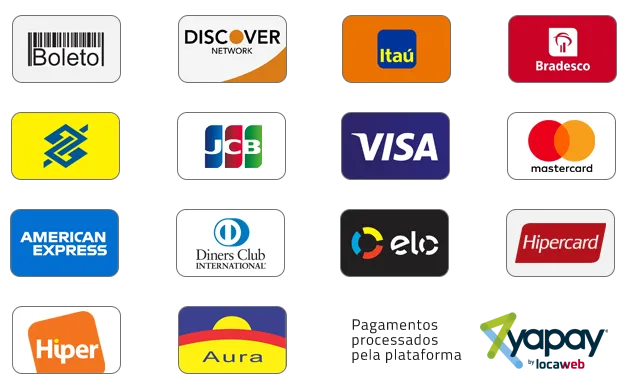Useful Life Definition and Use in Depreciation of Assets
Depreciation is allocated over the useful life of an asset based on the book value of the asset originally entered in the books of accounts. Leasehold properties, patents, and copyrights are examples of such assets. Estimated useful life is the number of years of service the business https://69lovesongs.info/linux-cloud-based-computing expects to receive from the asset. When calculating depreciation, the estimated residual value is not depreciation because the business can expect to receive this amount from selling off the asset. Estimated residual value is also known as the salvage value or scrap value.
- You have disposed of your property if you have permanently withdrawn it from use in your business or income-producing activity because of its sale, exchange, retirement, abandonment, involuntary conversion, or destruction.
- You also made an election under section 168(k)(7) not to deduct the special depreciation allowance for 7-year property placed in service last year.
- In June 2025, Make & Sell sells seven machines to an unrelated person for a total of $1,100.
- PepsiCo Inc. lists land, buildings and improvement, machinery and equipment (including fleet and software), and construction-in-progress under its PP&E account.
- You generally cannot depreciate property below a reasonable salvage value.
- You find the month in your tax year that you placed the property in service.
Useful Items
For a discussion of business/investment use, see Partial business or investment use under Property Used in Your Business or Income-Producing Activity in chapter 1. Reduce that amount by any credits and deductions allocable to the property. The following are examples of some credits and deductions that reduce basis. Qualified rent-to-own property is property held by a rent-to-own dealer for purposes of being subject to a rent-to-own contract. It is tangible personal property generally used in the home for personal use. It includes computers and peripheral equipment, televisions, videocassette recorders, stereos, camcorders, appliances, furniture, washing machines and dryers, refrigerators, and other similar consumer durable property.
What Is Depreciation in Accounting?
For other items of listed property, allocate the property’s use on the basis of the most appropriate unit of time. This chapter discusses some special rules and recordkeeping requirements for listed property. For complete coverage of the rules, including the rules concerning passenger automobiles, see Pub. For a normal retirement from a multiple property account, http://modelfan.ru/24759-business-in-great-waters-the-u-boat-wars-1916-1945-john-terraine.html if you figured depreciation using the average expected useful life, the adjusted basis is the salvage value estimated for the item of property when it was originally acquired. If an item of property is accounted for in a single item account, the adjusted basis is the basis you would use to figure gain or loss for a sale or exchange of the property.
What small business owners should know about the depreciation of property deduction
The following examples show how to figure depreciation under MACRS without using the percentage tables. Assume for all the examples that https://m-bulgakov.ru/publikacii/roman-bulgakova-master-i-margarita-dialog-s-sovremennostyu/p14 you use a calendar year as your tax year. The recovery periods for most property are generally longer under ADS than they are under GDS.
Sum of Years’ Digits Depreciation
In 2023, Beech Partnership placed in service section 179 property with a total cost of $2,940,000. The partnership must reduce its dollar limit by $50,000 ($2,940,000 − $2,890,000). Its maximum section 179 deduction is $1,110,000 ($1,160,000 − $50,000), and it elects to expense that amount. The partnership’s taxable income from the active conduct of all its trades or businesses for the year was $1,110,000, so it can deduct the full $1,110,000. It allocates $40,000 of its section 179 deduction and $50,000 of its taxable income to Dean, one of its partners. If you place more than one property in service in a year, you can select the properties for which all or a part of the costs will be carried forward.
- However, the election for residential rental property and nonresidential real property can be made on a property-by-property basis.
- Because you’ve taken the time to determine the useful life of your equipment for depreciation purposes, you can make an educated assumption about when the business will need to purchase new equipment.
- You apply the percentage to the unadjusted basis (defined earlier) of the property to figure your ACRS deduction.
- However, you can claim a section 179 deduction for the cost of the following property.
- It also discusses what items increase and decrease basis, how to figure adjusted basis, and how to allocate cost if you buy several pieces of property at one time.
- Small business owners can use depreciation to recoup some of the cost of an asset over its lifespan.
And, the depreciation charges still reduce a company’s earnings, which is helpful for tax purposes. Businesses also use depreciation for tax purposes—namely, to reduce their total taxable income and, thus, reduce their tax liability. Under U.S. tax law, a business can take a deduction for the cost of an asset, thereby reducing their taxable income. But, in most cases, the cost of the asset must be spread out over time; this is called asset depreciation. (In some instances, a business can take the entire deduction in the first year, under Section 179 of the tax code.) The IRS also has requirements for the types of assets that qualify. There are also special rules and limits for depreciation of listed property, including automobiles.
Example of Amortization vs. Depreciation
Depreciation measures the value an asset loses over time—directly from ongoing use (through wear and tear) and indirectly from the introduction of new product models (plus factors such as inflation). Writing off only a portion of the cost each year, rather than all at once, also allows businesses to report higher net income in the year of purchase than they would otherwise. Note that while salvage value is not used in declining balance calculations, once an asset has been depreciated down to its salvage value, it cannot be further depreciated. Parts that together form an entire structure, such as a building.
However, its simplicity can also be a drawback, because the useful life calculation is largely based on guesswork or estimation. It also does not factor in the accelerated loss of an asset’s value in the short term or the likelihood that maintenance costs will go up as the asset gets older. Straight-line depreciation is a good option for small businesses with simple accounting systems or businesses where the business owner prepares and files the tax return. Depreciation is often misunderstood as a term for something simply losing value, or as a calculation performed for tax purposes.


